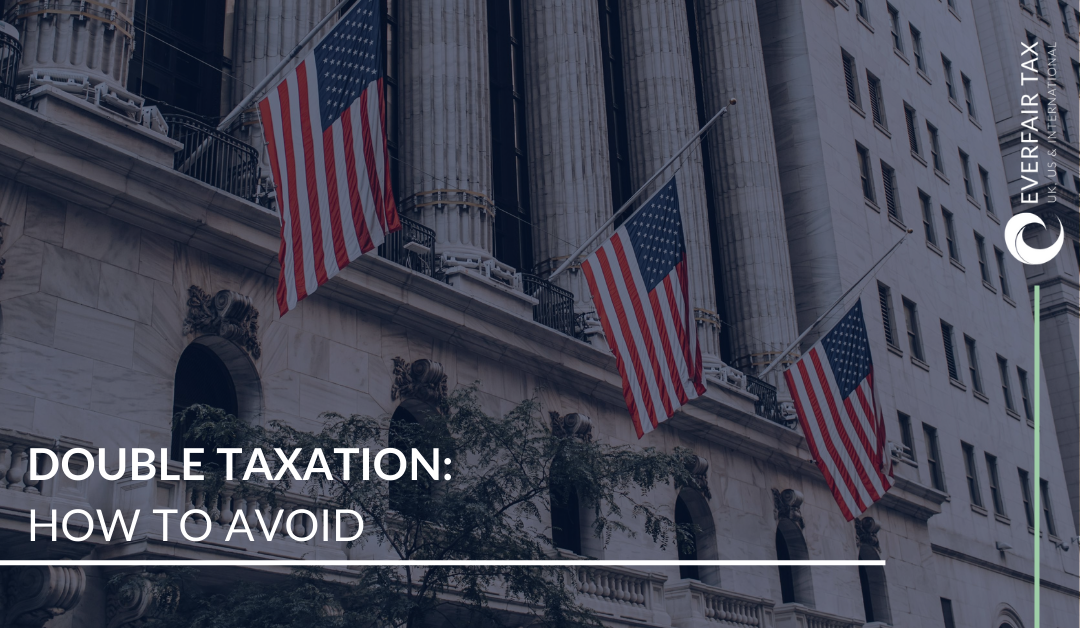Managing UK and US Pensions
2 February 2022
Understanding having pension schemes in more than one country.
In recent years, it is increasingly common for executives to have pension schemes in more than one country. Whether that has been from working abroad, or the option to become part of a pension scheme in another country. Therefore, the question often arises when we speak to a client; as to what to do with their pensions from a tax perspective.

Contributions
One of the first questions is often; whether you can get tax relief where you are now resident for contributions into a pension scheme in another country?
Under both the double taxation agreement between the UK and US, and under UK domestic rules, pension contributions to a plan in the other country can qualify for tax relief where you are resident.
For tax relief to apply, you must have been contributing to the plan prior to becoming resident in the other country. In addition, the plan in question must be a qualifying retirement plan.
Growth
Under the terms set out in the double taxation agreement between the UK and US, the growth in a qualifying plan in the other country, can’t be taxed where you are resident. Therefore, there is no need to report the annual income and gains received within a pension scheme. Nor the unrealised increase in the value of the assets held in the pension on an annual tax return. The treaty specifically lists IRAs and 401ks as qualifying pension schemes for this purpose.
Withdrawals
As a general rule, under the pensions article of the treaty, withdrawals from a qualifying pension scheme are taxed in the country of residence. This is regardless of where the pension scheme itself is based. However, this rule is subject to the savings clause contained earlier in the treaty. This clause effectively allows the countries to still tax the income on their nationals. Although, they have to provide credit for the tax paid in the country of residence.
It also provides that, where the country in which the pension plan is located would consider something as tax exempt, then it should be considered tax exempt where the person is resident. This would cover situations like the 25% tax free lump sum provided for under UK schemes. As well as the fact that withdrawals from Roth IRAs are tax free in the US.
This provision is not subject to the savings clause in the treaty mentioned above. It has been the subject of much debate over the years. For example, whether the IRS would allow the 25% lump sum exemption on a distribution from a UK scheme to a US citizen if they are resident outside the US, due to unclear wording of the provision in question.
Lump Sums
Where a person wants to withdraw their pension as a lump sum, in line with with the double taxation agreement, the pensions article states this is to be taxed where the plan is located. However, it is subject to the savings clause. This allows the country where the person is resident to also tax. This comes with a credit for the tax paid in the country where the plan is located.
There has been discussion over the years between advisors about the definition of ‘lump sum’ for this purpose. This has included; whether it covers anything but a withdrawal of the whole pot. As well as whether it can still be a lump sum if you have previously drawn on the pension.
Other Charges
As well as the position on distributions, there are additional charges which can arise in respect of a pension.
In the UK, this includes the lifetime allowance charge. This can apply at certain points when a person has more than their approved lifetime pension fund balance. The fund can vary between just over £1 million and £1.8 million depending on appropriate fixed and individual protections elections which have been made over the years. In the US, there is the 10% early withdrawal penalty if funds are withdrawn from a US pension prior to 59.5%, except in limited qualifying purposes.
The treaty doesn’t specifically provide for what happens with respect to these charges when the person receiving the funds is in the other country. Therefore, that country would normally have a right to tax regular distributions. There is very limited guidance or comment from both the IRS and HMRC. This means that such charges, where applicable, may be in addition to the normal income tax charge arising between the two countries.
Inheritance Tax (IHT) and Estate Tax
From a UK IHT perspective, UK schemes can generally be outside the scope of IHT. However, there is a potential issue with US pension schemes. These may qualify for the same treatment as domestic schemes, if they meet the conditions to be Qualifying Non-UK Pension Scheme (QNUPS) under the relevant regulations. Yet, there is an important difference in the way they are structured when compared to UK schemes.
With UK schemes, there is a non binding letter of wishes. This letter allows the trustees discretion over who they pay the funds to when a pension account holder dies. Although, they are likely to follow the letter of wishes. With the majority of US schemes, there is a binding nomination made as to who will receive the funds. This means the trustees have no discretion at all as to whom they pay the monies to on the account holders death.
This is a crucial difference as it means under UK tax rules, even if the scheme qualifies as a QNUPS, the value of the pension scheme is considered to fall back into the pension account holder’s estate for UK IHT purposes.
If you would like any help with your pension management. Or have any further questions on this topic, please don’t hesitate to contact us.
News
For updates featuring tax changes, reminders for deadlines, pointers on how to maximise your accounts, and information on Everfair Tax and their activities: you need look no further than our news & resources pages.
View MoreContact Us
Need some UK, US or International advice?
Contact us now.
Weybridge Office
Ground Floor, 37a Church Street
Weybridge, Surrey KT13 8DG
Tel: 01932 320 800
London Office
40 Gracechurch Street,
London, EC3V 0BT
Tel: 020 3949 5999
Email: info@everfairtax.co.uk

